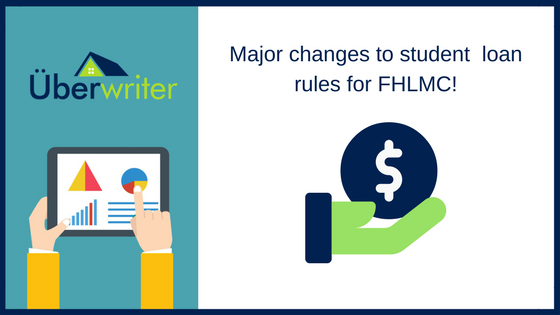The challenge of estimating the effect student loans on a potential borrower’s ability to repay their mortgage still seems to be an issue at both Fannie Mae and Freddie Mac. With the rising cost of getting an education, making a wrong move now could be detrimental to the future of our industry.
Here is an example of the problem. The borrower’s credit report on any student loan payment may or may not be what the borrower is paying or will pay in the near future for those loans. For example, I have seen student loans with a $50,000 balance show a $50 payment on the credit report. This situation usually means they borrower is on an income based repayment plan with the lender.
If we base the borrower’s ability to pay the mortgage on this low unrealistic payment something bad will occur. If for example that payment goes up from $50 to $500, the borrower may not be able to make his or her mortgage payment.
To deal with this situation FHLMC just announced in their selling bulletin 2017-23 dated October 18th that they now require the following calculations for student loan debts.
Student loans in repayment
For calculating the monthly DTI ratio, use the greater of:
A) The monthly payment amount reported on the credit report, or
B) 0.5% of the original loan balance or outstanding balance as reported on the credit report, whichever is greater
Student loans in deferment or forbearance
For calculating the monthly DTI ratio, use the greater of:
A) The monthly payment amount reported on the credit report, or|
B) 1% of the original loan balance or outstanding balance as reported on the credit report, whichever is greater
These changes are optional for loan that close up to January 18, 2018, but mandatory for any loan that closes after. We encourage you to read the rest of the bulletin and further details on these changes in the link above.

